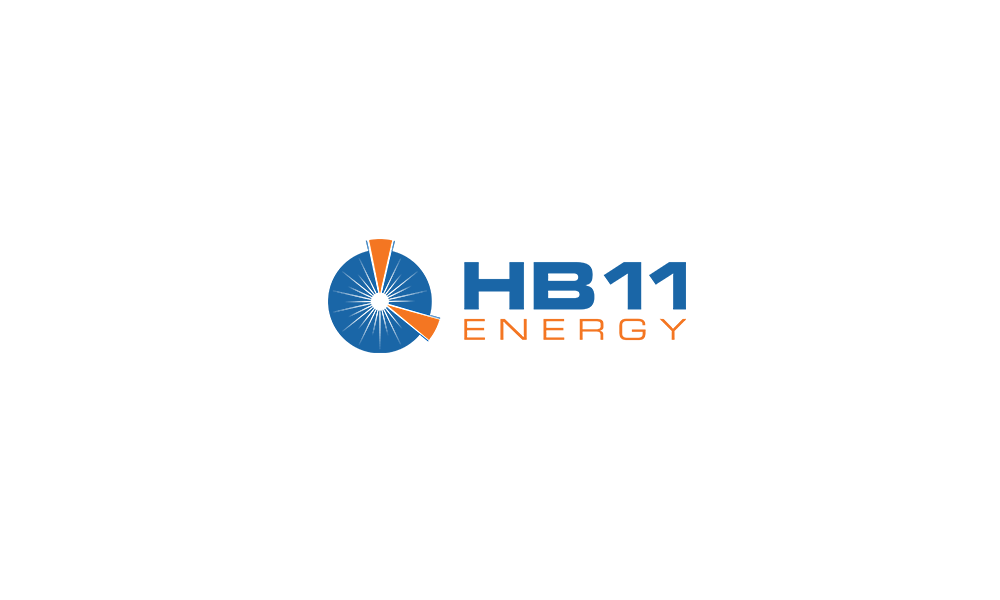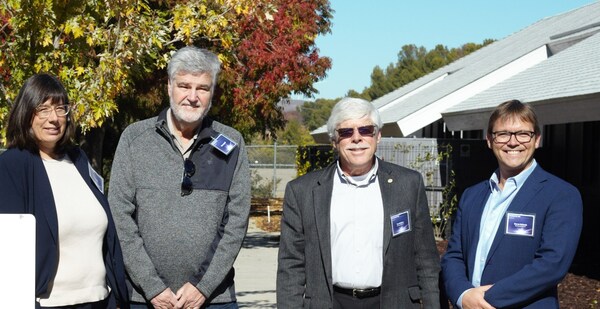
HB11 Energy Receives Grant From US Department of Energy to Develop Clean, Safe and Unlimited Fusion Energy
Published by Todd Bush on August 18, 2023
SYDNEY, Aug. 15, 2023 /PRNewswire/ -- The U.S. Department of Energy (DoE) has awarded a grant to HB11 Energy as part of its 'Innovation Network for Fusion Energy' ( INFUSE ) program with the objective, *"to accelerate basic research to develop cost-effective, innovative fusion energy technologies in the private sector."

The HB11 Energy team at Edward Teller Education Center, University of California – from left: Ellen Gorissen (GM Commercial), Dr. E. Michael Campbell (Scientific Advisory Board), Prof. Thomas A. Mehlhorn (Lead Target Design, Scientific Advisory Board), Dr. Warren McKenzie (Managing Director).
>> In Other News: Gwangju Institute of Science and Technology Researchers Design Efficient Iridium Catalyst for Hydrogen Generation
The program will provide access to world-leading expertise from the Laboratory for Laser Energetics (LLE) at the University of Rochester, an institutional partner of the National Ignition Facility, which recently demonstrated net energy gain from laser fusion. Led by HB11 Energy's Prof Thomas Mehlhorn and Prof. Adam Sefkow from LLE, the research will be focused on innovative hydrogen-boron fuel targets in its program to develop clean and safe fusion energy.
Also now part of the project is Max Tabak, widely regarded as the father of the fast ignition laser fusion concept - the fourth Edward Teller Award recipient on the HB11 Energy Team.
INFUSE is one of the first public-private-partnership (PPP) programs established to accelerate fusion energy R&D in partnership with the private sector as part of a broader vision announced by the White House to realise a fusion power plant on a decadal time-scale. To achieve this vision, the DoE is planning a greater PPP program, which is expected to be based on the NASA COTS program that supported SpaceX and established the commercial space launch industry.
The project will see hydrogen-boron developed as an alternative fuel to the deuterium-tritium used in most other fusion approaches, which faces enormous challenges to reach economic viability. Bypassing many of these challenges, the HB11 Energy technology uses a laser to drive the aneutronic hydrogen-boron-11 fusion reaction enabling a clean, safe, reliable and virtually unlimited source of energy that uses abundant fuels resulting in little or no harmful waste.
"It is a great honour to us all at HB11 Energy to have the DoE's fusion program supporting our world-leading researchers and their scientific developments towards hydrogen-boron fusion energy generation—an approach previously thought by many to be impossible," said Dr. Warren McKenzie, founder & Managing Director of HB11.
"We are now one step closer to realising the 1970s theories of our co-founder Professor Hora. Being aneutronic, the technology pathway to a functioning HB11 fusion energy reactor is significantly less complicated and therefore, shorter and much less expensive than any other proposed method of fusion energy. HB11 Energy's technologies could create the world's safest, most economic, lowest-carbon source of abundant clean energy."
HB11 Energy
HB11 Energy is creating the future of clean energy; safe, reliable, and unlimited electricity, generated by nuclear fusion reactors that use abundant fuels with little or no harmful waste. It does this by using laser technology to fuse hydrogen and boron-11. Hydrogen is the most abundant element in the universe, while Boron-11 comprises some 80% of all Boron found in nature, is readily available, and is a stable, non-radioactive isotope.
SOURCE HB11 Energy Holdings
Subscribe to the newsletter
Daily decarbonization data and news delivered to your inbox
Follow the money flow of climate, technology, and energy investments to uncover new opportunities and jobs.
Latest issues
-
The Three-Continent Move That Redefines SAF
Wishing everyone a restful holiday season.🎄🎅🎁 Inside this Issue ✈️ Cathay Goes Global With SAF in Three-Continent Fuel Deal 🧪 Proton Ventures Partners With Barents Blue For Realization Of The Bar...
-
Can One Truck Fix Hydrogen’s Biggest Problem?
Inside This Issue 🚛 Alberta's Shared Truck Model Could Crack Hydrogen Adoption ✈️ ZeroAvia Completes Financing Round 🌾 Frontier And NULIFE Scale New Biowaste Carbon Removal Approach 🔥 WAGABOX® Of ...
-
North America’s Carbon Removal Year in Review: Winners, Losers, Surprises
Inside This Issue 🌎 North America's Carbon Removal Year in Review: The Deals, Policies, and Milestones That Shaped 2025 🚢 Hapag-Lloyd And North Sea Container Line Win ZEMBA Second E-Fuel Tender 🪨 ...
Company Announcements
-
ClimeFi Announces New 85,000 Tonne Procurement Round
In its latest procurement round, ClimeFi has enabled more than US$18m in durable carbon removal purchases across eight removal pathways: Biochar, Bioenergy with Carbon Capture and Storage (BECCS), ...
-
Vallourec, a world leader in premium seamless tubular solutions, and Geostock, a global specialist in underground storage of energy, have signed a Memorandum of Understanding (MoU) to strengthen th...
-
CMA CGM, DHL Step Up Ocean Freight Decarbonization with Biofuel Deal
DHL Global Forwarding and shipping group CMA CGM have agreed to jointly use 8,990 metric tons of second-generation biofuel to reduce emissions from ocean freight. The initiative is expected to cut...
-
Next-Generation Gas Turbine Control System For Thermal Power Plants Completes Functional Testing
Integration of Mitsubishi Power's control technology with Mitsubishi Electric's high-speed data processing technology Supports rapid load adjustments and diverse fuels including hydrogen Tokyo, ...